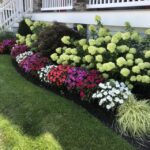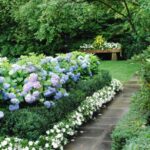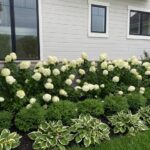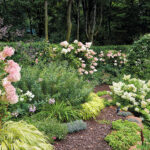Hydrangeas are beautiful flowering shrubs that make a lovely addition to any garden or landscape. With their large, showy blooms in shades of blue, pink, white, and purple, hydrangeas are a popular choice for adding color and charm to outdoor spaces. Properly landscaping hydrangeas can help enhance their beauty and ensure they thrive in their environment.
When planting hydrangeas, it is important to consider the amount of sunlight they will receive. Hydrangeas prefer partial shade, as too much sun can cause their blooms to fade and wilt. Planting them in a location that receives morning sun and afternoon shade is ideal for ensuring they thrive and produce vibrant blooms all season long.
Hydrangeas require well-draining soil that is rich in organic matter. Amending the soil with compost or peat moss before planting can help improve drainage and provide the necessary nutrients for healthy growth. Additionally, hydrangeas prefer soil that is slightly acidic, so adding sulfur or ammonium sulfate can help maintain the proper pH levels for optimal growth.
Proper pruning is essential for maintaining the health and shape of hydrangeas. In early spring, remove any dead or damaged branches to encourage new growth and improve air circulation around the plant. Avoid pruning the main stems, as this can inhibit the growth of new blooms. Instead, focus on removing older, woody branches to promote new growth and ensure a full, lush appearance.
Hydrangeas benefit from regular watering, especially during hot, dry spells. Water deeply at least once a week, making sure to soak the entire root ball to encourage deep root growth. Mulching around the base of the plant can help retain moisture and prevent weeds, while also providing insulation for the roots during extreme temperatures.
To enhance the beauty of hydrangeas in your landscape, consider adding complementary plants and accessories. Planting low-growing annuals or perennials around the base of hydrangeas can help fill in gaps and create a layered, textured look. Additionally, incorporating decorative elements such as trellises, arbors, or stepping stones can add interest and visual appeal to the overall design of your garden. With proper care and thoughtful landscaping, hydrangeas can be a stunning focal point in any outdoor space.
















